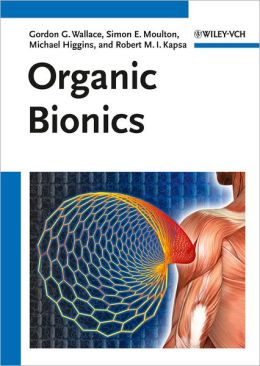 [内容简介]
[内容简介]
The first reference on this emerging interdisciplinary research area at the interface between materials science and biomedicine is written by pioneers in the field, who address the requirements, current status and future challenges. Focusing on inherently conducting polymers,
carbon nanotubes and graphene, they adopt a systematic approach, covering all relevant aspects and concepts: synthesis and fabrication,
properties, introduction of biological function, components of bionic devices and materials requirements. Established bionic devices, such as the bionic ear are examined, as are emerging areas of application, including use of organic bionic materials as conduits for bone re-growth,
spinal cord injury repair and muscle regeneration. The whole is rounded off with a look at future prospects in sustainable energy generation and storage.
Invaluable reading for materials scientists, polymer chemists, electrotechnicians, chemists, biologists, and bioengineers.
[目录]
MEDICAL BIONICS
Medical Bionics Devices
Key Elements of a Medical Bionic Device
CARBON
Introduction to Carbon
Graphene
Carbon Nanotubes
Summary
ORGANIC CONDUCTING POLYMERS
Polypyrrole
Polythiophenes
Polyanilines
Properties of OCPs
Chemical-Biological Properties
Mechanical Properties
Surface Morpholgy
Conclusions
ORGANIC CONDUCTORS -
BIOLOGICAL APPLICATIONS
Carbon Structures for Medical Bionics
Carbon Nanotubes
Graphene
Conducting Polymers
Toxicity
Sterilization
MATERIALS PROCESSING/DEVICE FABRICATION
Introduction
Conducting Polymers
Carbon Nanotubes
Graphene
Composites with Conventional Polymers - a Medical Focus
3-D Structured Materials and Device Fabrication
ORGANIC BIONICS -
WHERE ARE WE? WHERE DO WE GO NOW?
Materials Design and Selection
Materials Synthesis and Processing
Flexible and Printable Electronics
Characterization

 新书报道
新书报道